I am trying to see the power of recurrent neural calculations.
I give the NN just one feature, a timeseries datum one step in the past, and predict a current datum.
The timeseries is however double-seasonal with considerably long ACF structure (about 64) with additive shorter seasonality for lag 6.
You could note it is shifted. I checked my vectors, and they seem OK.
MSE residuals are also quite bad (I expect 0.01 on both train validation thanks to Gaussian noise added with sigma = 0.1):

> head(x_train)
[1] 0.9172955 0.9285578 0.4046166 -0.4144658 -0.3121450 0.3958689
> head(y_train)
[,1]
[1,] 0.9285578
[2,] 0.4046166
[3,] -0.4144658
[4,] -0.3121450
[5,] 0.3958689
[6,] 1.5823631
Q: am I doing something wrong in terms of LSTM acrchitecture, is my code erroneous in how I sampled my data?
Code below assumes you have installed all the libraries listed.
library(keras)
library(data.table)
library(ggplot2)
# ggplot common theme -------------------------------------------------------------
ggplot_theme <- theme(
text = element_text(size = 16) # general text size
, axis.text = element_text(size = 16) # changes axis labels
, axis.title = element_text(size = 18) # change axis titles
, plot.title = element_text(size = 20) # change title size
, axis.text.x = element_text(angle = 90, hjust = 1)
, legend.text = element_text(size = 16)
, strip.text = element_text(face = "bold", size = 14, color = "grey17")
, panel.background = element_blank() # remove background of chart
, panel.grid.minor = element_blank() # remove minor grid marks
)
# constants
features <- 1
timesteps <- 1
x_diff <- sin(seq(0.1, 100, 0.1)) + sin(seq(1, 1000, 1)) + rnorm(1000, 0, 0.1)
#x_diff <- ((x_diff - min(x_diff)) / (max(x_diff) - min(x_diff)) - 0.5) * 2
# generate training data
train_list <- list()
train_y_list <- list()
for(
i in 1:(length(x_diff) / 2 - timesteps)
)
{
train_list[[i]] <- x_diff[i:(timesteps + i - 1)]
train_y_list[[i]] <- x_diff[timesteps + i]
}
x_train <- unlist(train_list)
y_train <- unlist(train_y_list)
x_train <- array(x_train, dim = c(length(train_list), timesteps, features))
y_train <- matrix(y_train, ncol = 1)
# generate validation data
val_list <- list()
val_y_list <- list()
for(
i in (length(x_diff) / 2):(length(x_diff) - timesteps)
)
{
val_list[[i - length(x_diff) / 2 + 1]] <- x_diff[i:(timesteps + i - 1)]
val_y_list[[i - length(x_diff) / 2 + 1]] <- x_diff[timesteps + i]
}
x_val <- unlist(val_list)
y_val <- unlist(val_y_list)
x_val <- array(x_val, dim = c(length(val_list), timesteps, features))
y_val <- matrix(y_val, ncol = 1)
## lstm (stacked) ----------------------------------------------------------
# define and compile model
# expected input data shape: (batch_size, timesteps, features)
fx_model <-
keras_model_sequential() %>%
layer_lstm(
units = 32
#, return_sequences = TRUE
, input_shape = c(timesteps, features)
) %>%
#layer_lstm(units = 16, return_sequences = TRUE) %>%
#layer_lstm(units = 16) %>% # return a single vector dimension 16
#layer_dropout(rate = 0.5) %>%
layer_dense(units = 4, activation = 'tanh') %>%
layer_dense(units = 1, activation = 'linear') %>%
compile(
loss = 'mse',
optimizer = 'RMSprop',
metrics = c('mse')
)
# train
# early_stopping <-
# callback_early_stopping(
# monitor = 'val_loss'
# , patience = 10
# )
history <-
fx_model %>%
fit(
x_train, y_train, batch_size = 50, epochs = 100, validation_data = list(x_val, y_val)
)
plot(history)
## plot predict
fx_predict <- data.table(
forecast = as.numeric(predict(
fx_model
, x_val
))
, fact = as.numeric(y_val[, 1])
, timestep = 1:length(x_diff[(length(x_diff) / 2):(length(x_diff) - timesteps)])
)
fx_predict_melt <- melt(fx_predict
, id.vars = 'timestep'
, measure.vars = c('fact', 'forecast')
)
ggplot(
fx_predict_melt[timestep < 301, ]
, aes(x = timestep
, y = value
, group = variable
, color = variable)
) +
geom_line(
alpha = 0.95
, size = 1
) +
ggplot_theme

